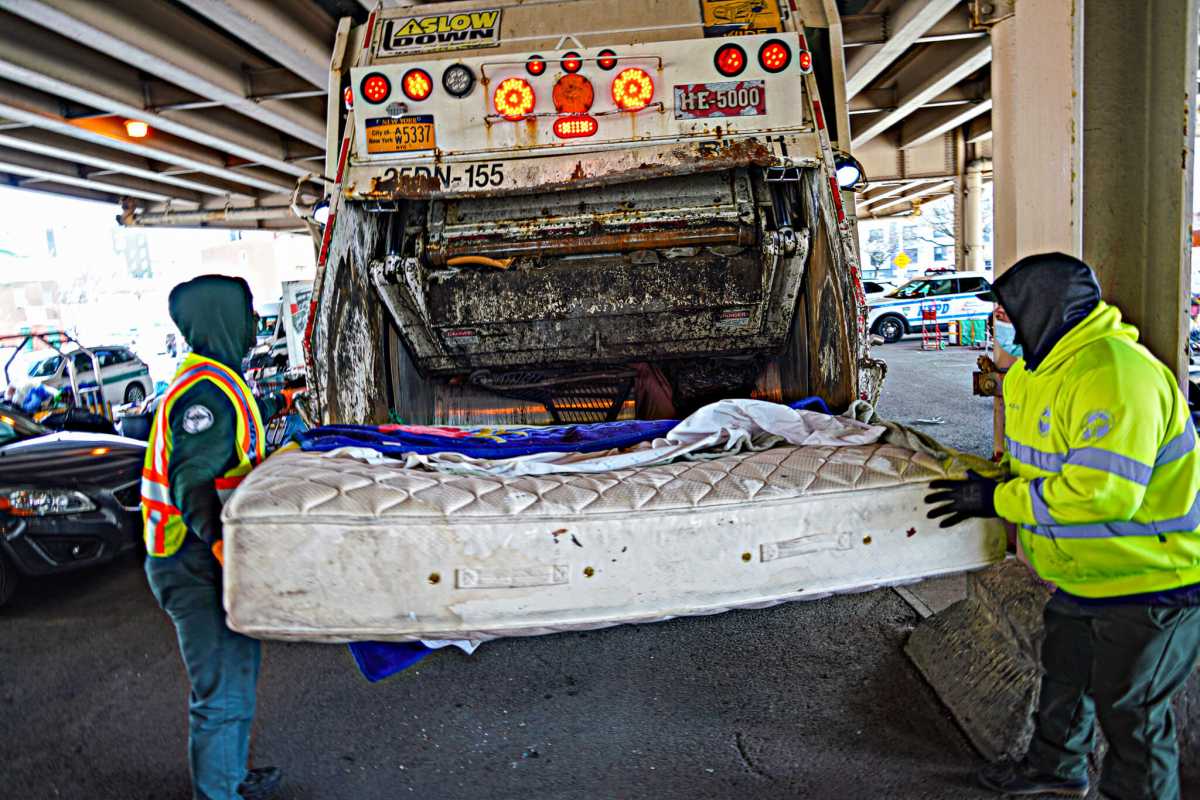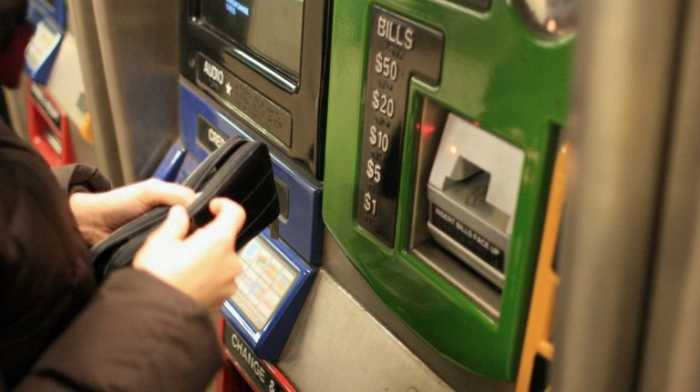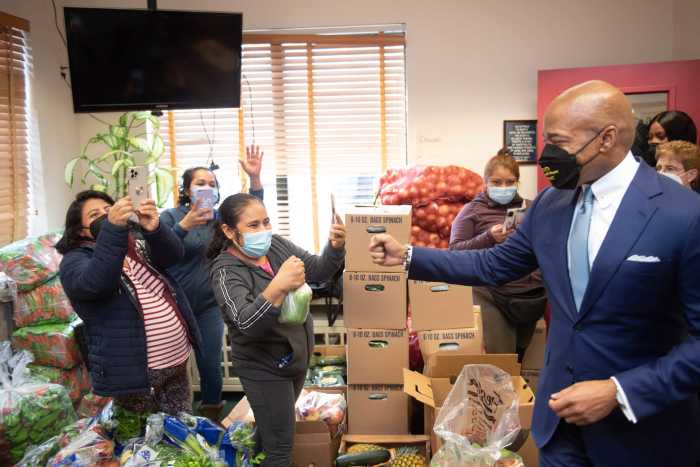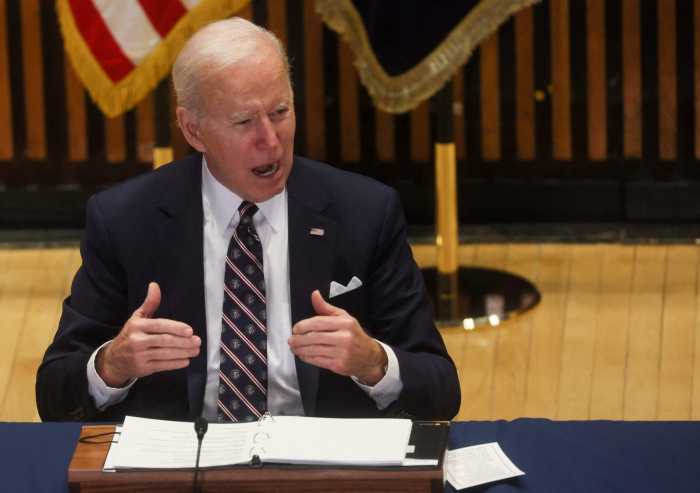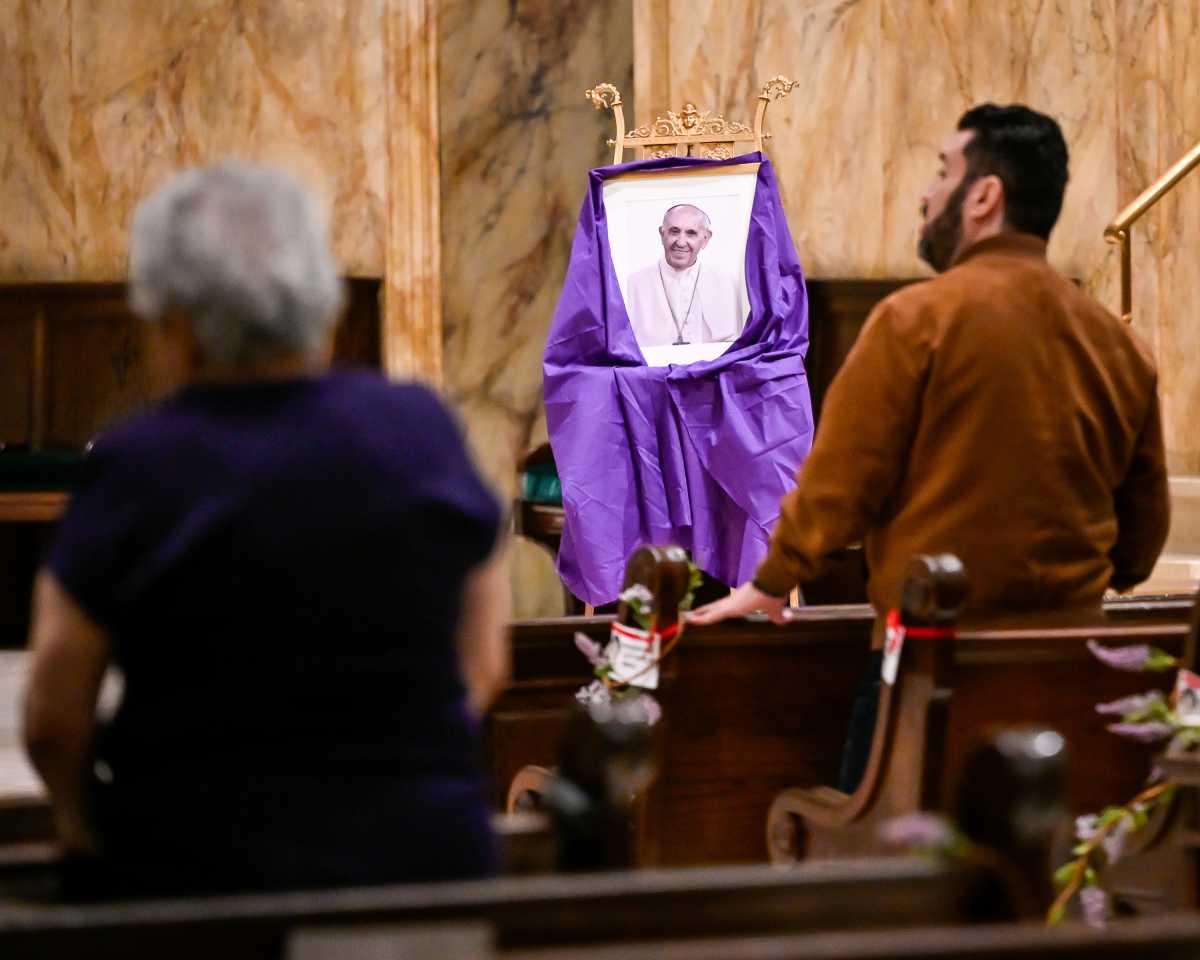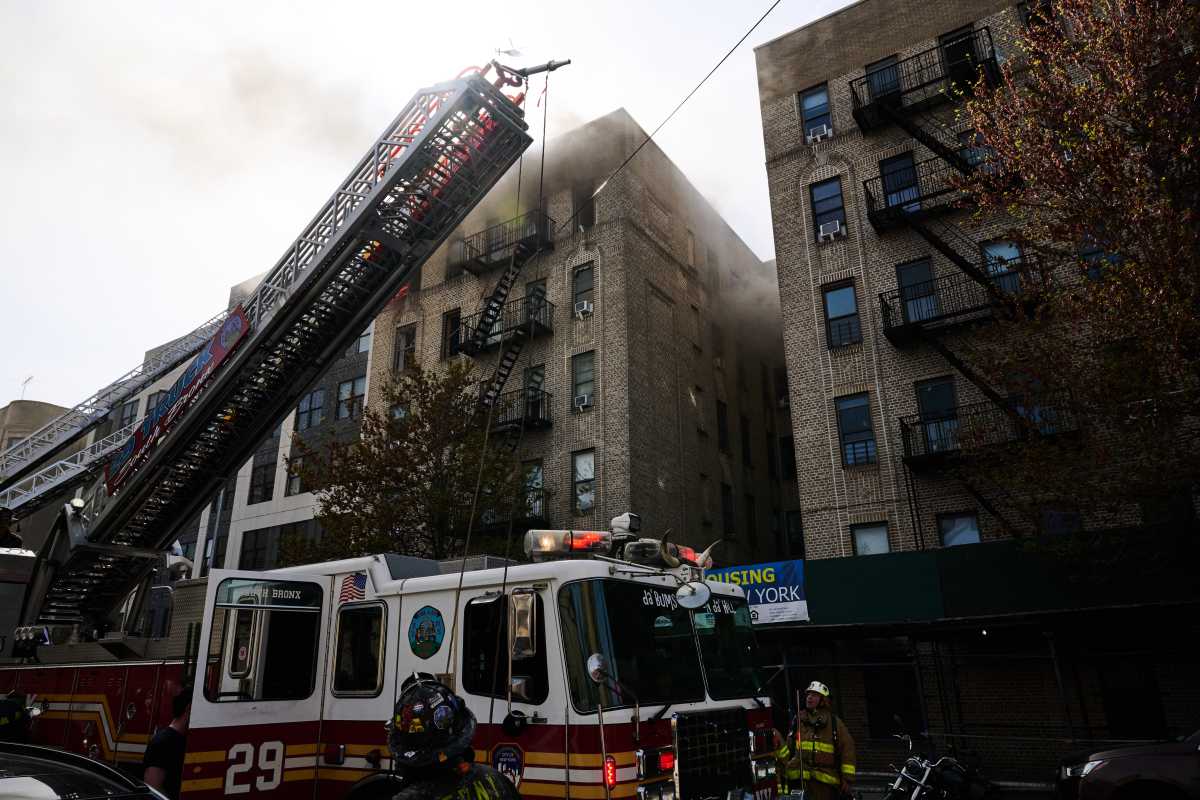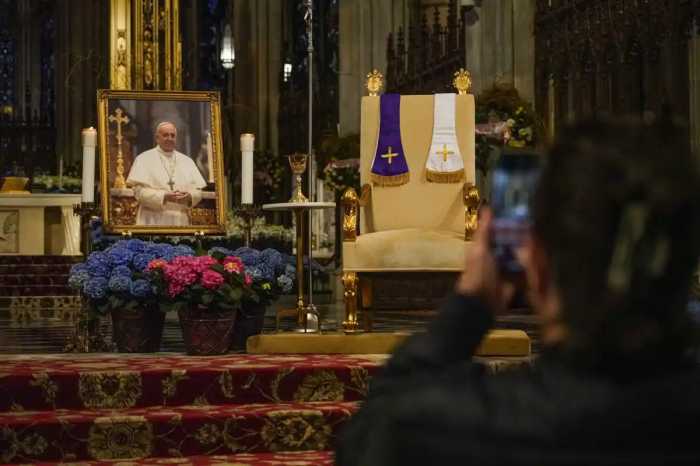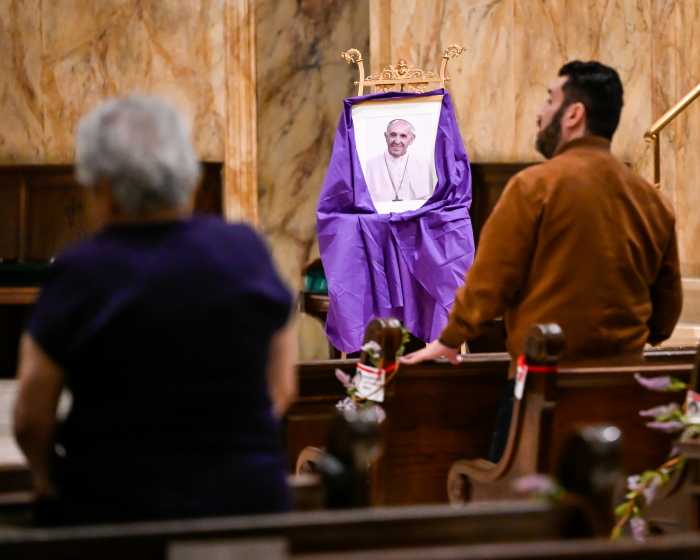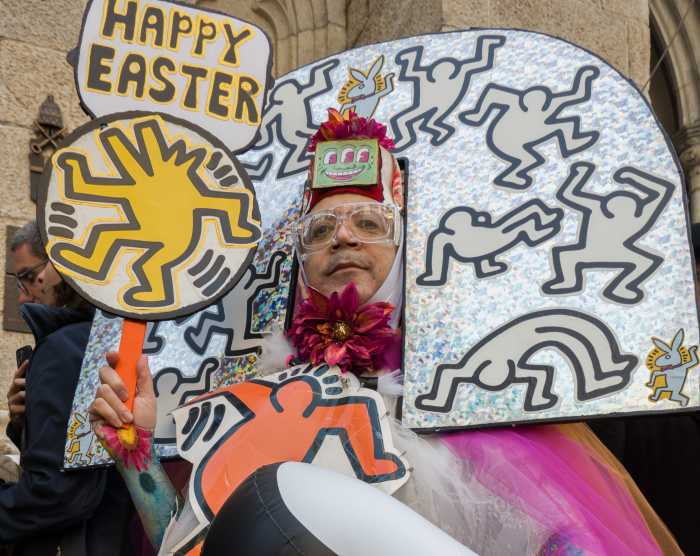The mayor’s new plan to remove homeless encampments throughout the city took effect Monday afternoon as city agencies removed several unhoused people and their belongings from their longtime home under the Brooklyn-Queens Expressway in Williamsburg, Brooklyn.
The Department of Sanitation, the New York City Police Department, and a homeless outreach team carried out the mayor’s newest initiative on March 28, telling several people living beneath the expressway in tents and other makeshift dwellings to gather any belongings they wanted to keep — the rest would be destroyed.
NYPD officers looked on as members of DSNY began yanking pieces of wood, fabric, and tents that made up the meager homes. Those impacted watched helplessly as the very mattresses on which they slept were crushed in a garbage compactor.
“This effort is about taking care of our people and our public spaces because no New Yorker deserves to live on the street,” said Mayor Eric Adams in a statement. “We are breaking down siloes and working together across government to keep New Yorkers safe and our streets clean. These are basic expectations we have for our city, and we are going to deliver.”
Adams told The New York Times about his plan to clear homeless encampments in the city within two weeks last Friday. Gothamist later reported that the effort had already begun. The policy came shortly after Adams announced a crackdown against people sleeping on subway trains and in stations.
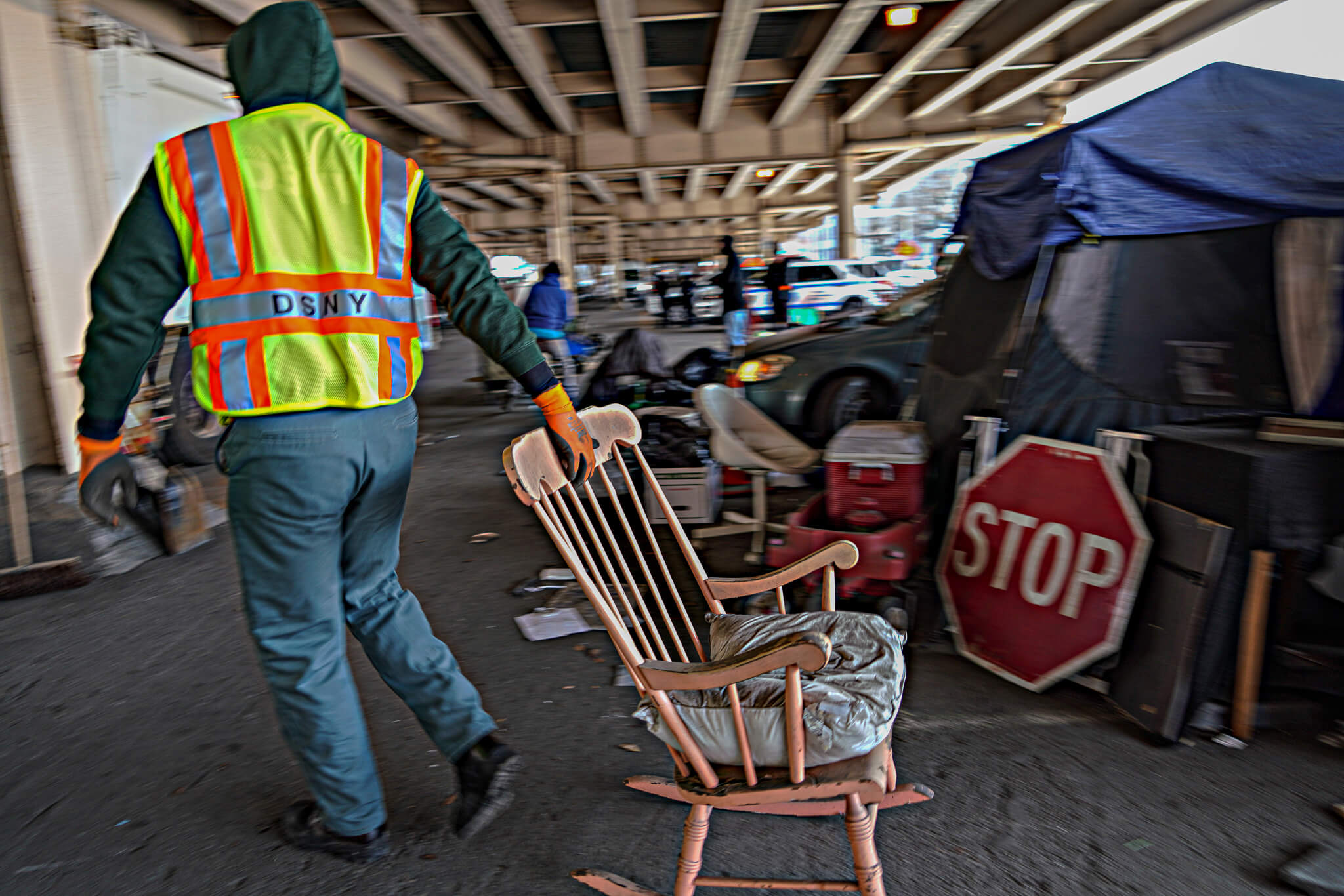
“Encampments,” according to the city’s 311 portal, are anything from mattresses to tents and tarps.
The mayor’s office said the policy is targeting about 150 campsites and promised that officers will not be heavy handed during the sweep and pledges that they will wear their body-worn cameras throughout the process.
Adams is also urging those living on the streets to enter the shelter system. But those experiencing homelessness say it is not so easy.
“I am not going back,” Heriberto Medina Jr. told amNewYork Metro. “When I was at a shelter, I was attacked and I had my skull cracked. I am not going back.”
The sweep was the third such “cleanup” to occur beneath the BQE in a number of days, according to community groups.
Just a few blocks away, near Withers Street and Meeker Avenue, two well-established encampments were cleared away without warning, said Benjamin Adam, an organizer with North Brooklyn Essentials, a mutual aid group focused on making connections with and providing resources for their homeless neighbors.
One of the encampments, which had been home to a group of Polish individuals, was carefully constructed with gates and a hand washing station, Adam said, noting that the hand washing station was more than government officials had provided for homeless people during the pandemic.
The city’s commitment to clearing encampments in two weeks is new, but sweeps aren’t, Adam said. Police, DSNY, and outreach workers regularly clear out encampments, tossing people’s belongings and often displacing them.
But the timing of Monday’s sweep was unusual — DSNY’s cleanups are usually scheduled every other Thursday, Adam said, and the department posts flyers to let people know ahead of time.
But last week, after the other encampments were cleared, flyers went up along the concrete posts below the BQE warning of a return visit on Monday. For about a year, Adam and other members of North Brooklyn Essentials have been working alongside DSNY during cleanups, walking through to speak with their homeless neighbors to discuss what’s theirs and what’s trash.
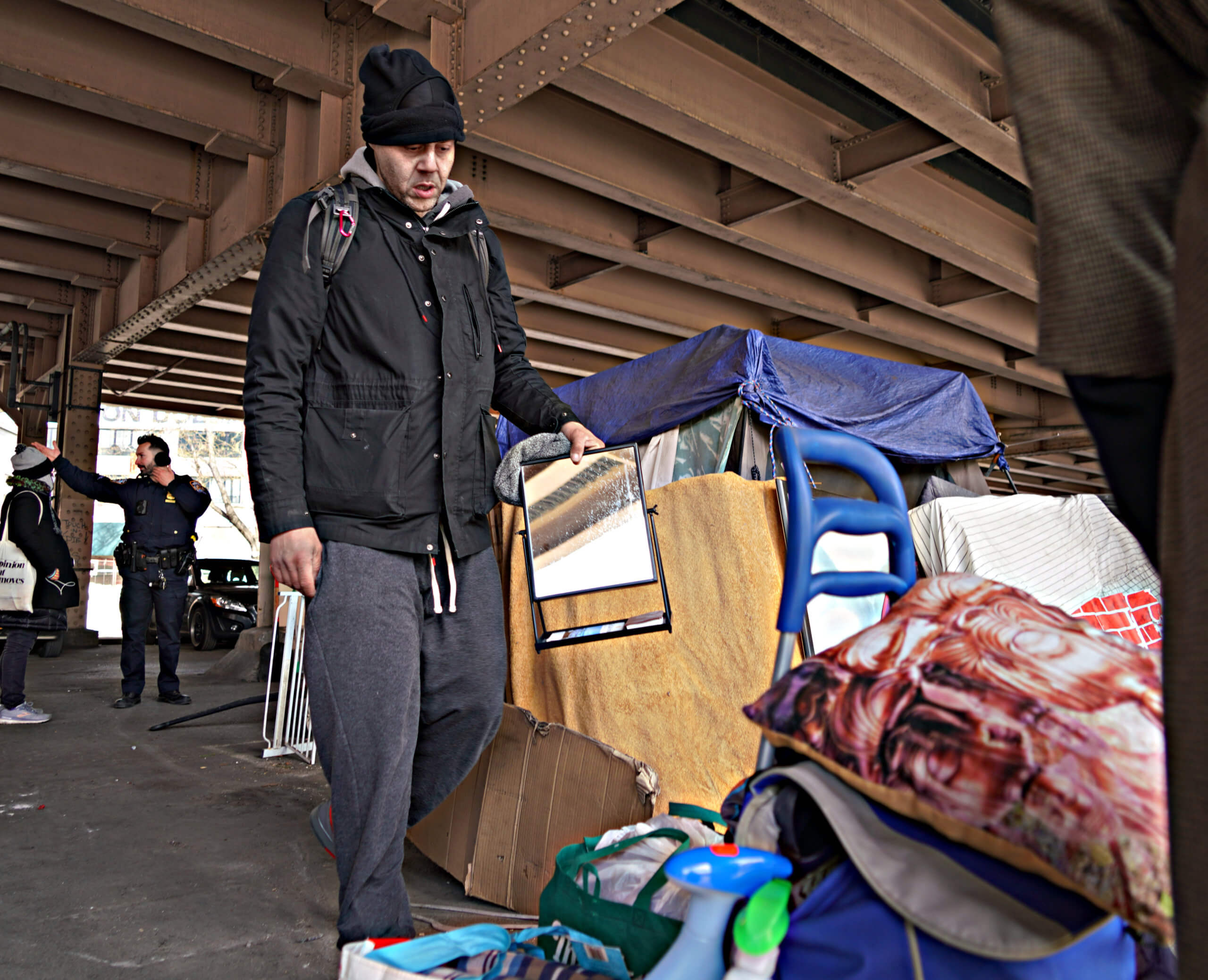
After last week’s destructive sweeps, North Brooklyn Essentials wanted to be ready for anything on Monday, calling for supporters to head out to the site of the targeted encampment near Manhattan Avenue to discourage cops from moving in, or at least to support the people being displaced.
A group of supporters gathered beneath the BQE in the below-freezing winds starting at 7 a.m. on March 28, watching as DSNY and NYPD vehicles drove by, snapping photos. The raid began when the city agencies returned with the garbage truck in the early afternoon.
Adam said the homeless are often blamed for leaving trash and making a mess under the busy overpass, but that most of the garbage that accumulates comes from the drivers and other individuals and businesses, including film studios, illegally dumping their trash.
“Sometimes homeless folks help out with cleanups,” he said. “We have an abundance of documented evidence that they are part of the solution, not part of the problem.”
Sweeps have become more and more frequent in the last few years, displacing thousands of people as their shelters were tossed out. While some may take up the city’s offer to move to a shelter, many, like Medina, say the city’s shelters are unsafe or too restrictive. Michael, another person who had been living in the same encampment, has not been allowed to stay with his partner at city shelters, and the pair don’t want to be apart.
People like Adam, or like outreach workers with city-contracted groups like Breaking Ground, often have established relationships with the residents of encampments, Adam said. The sweeps force those residents out, often without a means of communication and severed from their support networks.
“The folks who are down here are down here because they have nowhere else to go,” Adam said. “What sweeps like this do is extraordinarily exacerbate the already dangerous and volatile, precarious conditions they’re trying to survive.



